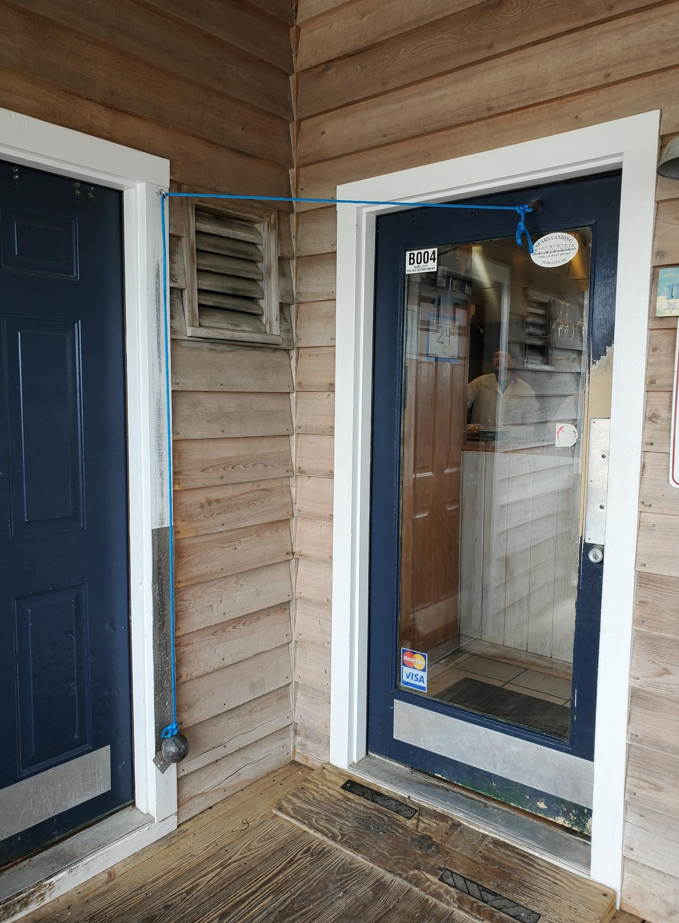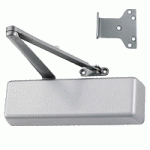Pete Chappell of Cook and Boardman sent me today’s Fixed-it Friday photos of a “door closer” that definitely won’t provide the level of control that a typical door closer would (it’s cool though!). Since the door serves a restaurant and I would assume that it needs to comply with the accessibility requirements, I’m wondering whether it meets the limitations on closing speed. I know…I’m a party pooper! 😀
You need to login or register to bookmark/favorite this content.










I’m guessing the regular door closer is broken?
Look closely at the open door… There’s one there
Old School sometimes works better than these new fangled listed devices.
I think Thomas Jefferson invented that closer. I saw it in use at Monticello. It does date back to 1760 or earlier.
I’m pretty sure I saw one at Old Sturbridge Village, too! 🙂
– Lori
This is early American technology at its best. There is a pedestrian gate in Colonial Williamsburg that utilizes the counter weight/rope setup that has been controlling animals from escaping for many, many years. Few moving parts, and no hydraulic fluid to leak or springs to break!
I’ve seen that gate! I was actually looking for my photo of it when I went on vacation there umpteen years ago! 🙂
– Lori
Despite the unique “closer”, the entrance door is inswinging which is likely a code violation!
Hi Pete –
I’m hoping that the calculated occupant load is less than 50 people, which would make the inswinging door ok, but who knows?!
– Lori
I am not sure of the occupant load, but 50 would be pushing it for the interior seating capacity.
2 for 1…… provides a way to get in, if you forget the key as well!
WTH, words escape me…
If it was a rated door the nylon rope could be the fusible ink too.
In theory, the closing speed could be addressed. The design could add a pipe, with a cap on the bottom and the counter weight would travel inside the pipe. If the ID of the pipe was just a little bit bigger that the counter weight, the trapped air would slow the descent of the counter weight. If the closing speed is too slow, then drill some holes to allow the air to escape faster.
Back in the 80’s at the Boston Center for Independent Living, Doug Feeney first started used this for individuals to also open their doors. The right combination of pulleys was used per person. That and this closer were a great solutions for many individuals with disabilities living in their own apartments or homes. An effective way to avoid the need/cost to install a full door opener for certain individuals.
Very interesting, Jackie!
– Lori